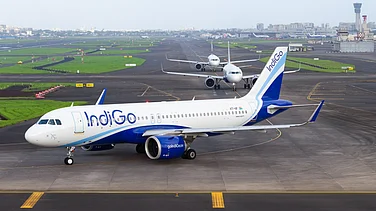Ride hailing platform Namma Yatri is planning to focus on areas including technology, R&D, and product innovation with its latest fundraise of $11 million.
“Just as UPI enhances user experience, reduces costs, and boosts digitisation, we view mobility as equally foundational. We aim to integrate various transport modes, including public transport and ferries, to create affordable and seamless mass mobility,” says Shan MS, Chief Operating Officer, Namma Yatri, in an interaction with Outlook Business.
The ride-hailing platform follows a subscription-based model instead of commission-based models. So, instead of charging a commission for every ride, the platform says that it is focused on a zero-commission, direct-to-driver model.
The open source app that is also available on Open Network for Digital Commerce (ONDC), claims to have 74,74,048 registered users in the country. Namma Yatri joined government-backed ONDC in 2023 and is the first ride-hailing app to have joined the e-commerce platform. “From the outset, we have been involved in all the traffic that ONDC has generated, contributing to and benefiting from its expansion across these diverse sectors,” adds Shan.
Going by the tagline ‘Book an auto with Zero Commission’, the platform aims to highlight the fact that it's an app for the people, by the driver. Last year, the company launched two subscription models for auto drivers: a daily fee of Rs 25 for unlimited rides or Rs 3.50 per trip for up to 10 trips, with additional rides being free.
“The existing platforms treat drivers as mere resources, and drivers are unhappy with this treatment and the commission structure, leading to poor customer service. To address these issues, we wanted to solve the root cause by taking a more empathetic, people-first approach. Consequently, we shifted from a commission-based model to a subscription-based model, giving drivers more earnings, ownership, freedom, and agency,” says Shan.
Launched in 2022 by Bengaluru Auto Rickshaw Drivers' Union (ARDU) in partnership with local auto drivers, Namma Yatri was developed by Juspay Technologies with backing from the Beckn Foundation.
Namma Yatri is eyeing Tier II and Tier III cities. The company is currently present in eight cities, but its level of investment and market penetration is not as high as we would like, adds Shan.
“We are now moving into phase two, where we will focus on markets often overlooked by larger players, particularly Tier II and Tier III markets. These markets are typically seen as small and unattractive, with low levels of digital penetration, especially in mobility,” he adds.
Namma Yatri plans to introduce alternative models tailored for these smaller towns and cities to significantly benefit from digitisation. To give an example, Tumakuru, a small city in Karnataka, has approximately 1500 drivers via Namma Yatri.
Shan says that residents in these areas (Tier II and Tier III cities) aren't accustomed to using an app to book an auto or a cab. Instead, they usually have the phone numbers of drivers and call them directly. If the driver is busy, it can take time, and if the driver is far away, there is a lot of inefficiency. In the worst case, the customer has to walk to the auto stand to find a ride, especially during non-peak hours when drivers may not be available.
“Digital solutions help improve customer convenience while increasing earnings for drivers. We are in the process of expanding into many tier 2 and tier 3 towns in Karnataka and some other southern states. We have also initiated operations in West Bengal and opened in Siliguri, with more Tier 2 towns to follow,” says Shan.
Interestingly, Namma Yatri’s subscription model is being followed by Ola and Uber as well. The Economic Times recently reported that both the ride-hailing apps have decided to offer subscription-based models to auto drivers. “We’re happy to see a 10-15-year-old industry transforming to benefit drivers. Despite the increased competition, we're pleased that drivers are gaining from these changes,” says Shan.
Speaking about the company’s future plan, Shan says that it is centered on two objectives: empowering drivers and service providers and integrating public transport to make it mainstream and convenient.
Recently, there were reports that passengers in Kochi and Chennai can book Metro tickets through Google Maps. The booking and payment service will be handled by Namma Yatri.
Empowerment of drivers and increased public transportation use are essential to solving mobility challenges, adds Shan.































